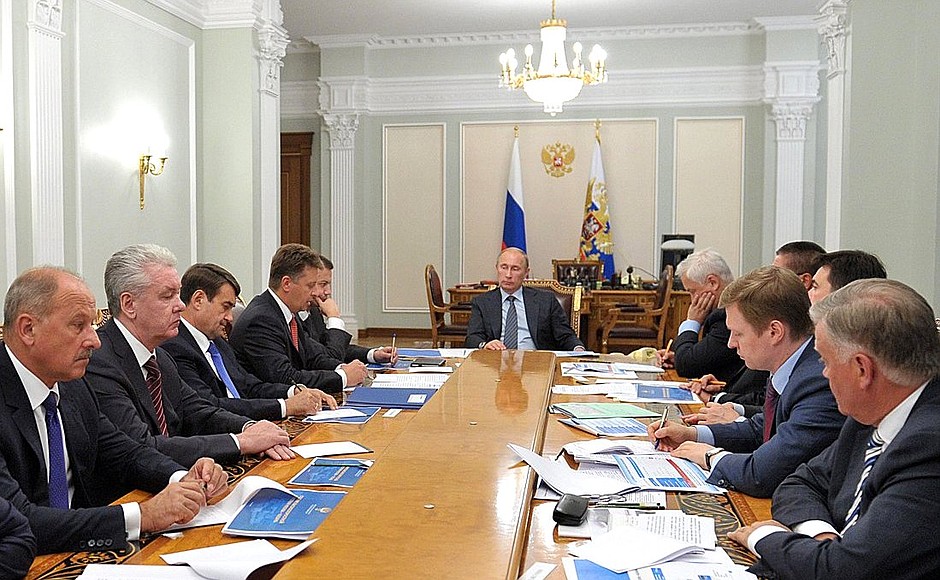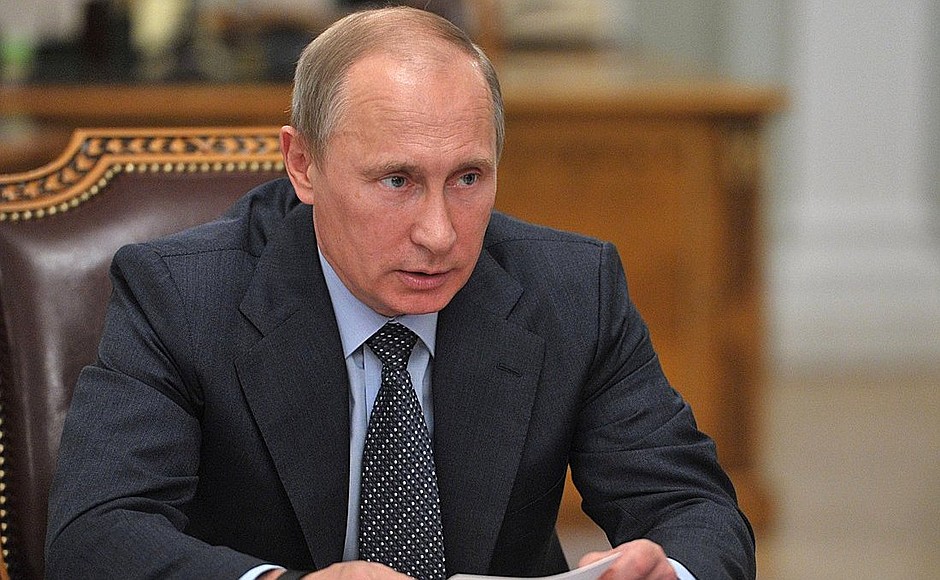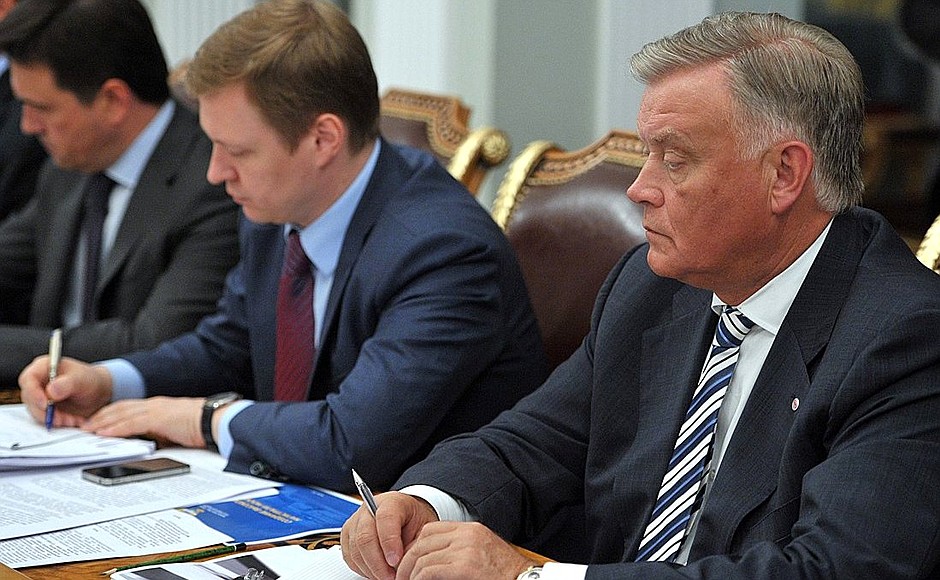The Moscow-Kazan high-speed railway is one of the big infrastructure projects the President announced at the St Petersburg International Economic Forum in June. It focuses on developing high-speed rail transport and takes the passenger transport system to a qualitatively new level.
* * *
President of Russia Vladimir Putin: Good afternoon, colleagues.
As was agreed, we are continuing today the series of meetings on carrying out the big infrastructure projects announced at the St Petersburg International Economic Forum in June.
Last week, we discussed modernisation and expanding throughput capacity on the Trans-Siberian and Baikal-Amur railways. Today, we will talk about the plans to build a high-speed rail link between Moscow and Kazan, which we expect to have ready to start operation in 2018.
This is a new project for Russia. Essentially, it is the logical continuation of our high-speed railway development. We already have the rapid rail links operating between Moscow and St Petersburg, Moscow and Nizhny Novgorod, and the link with Helsinki. But what we are talking about today is a high-speed railway. We need to examine its feasibility on both the practical and economic levels. Maybe we should stick to building another rapid railway link. We need to look at all the issues involved. Whatever the case, the project’s goal is to take the railway passenger transport system to a qualitatively new level.
”The Moscow-Kazan line would be just the first step. It could serve as the pilot project for a future rail link connecting Central Russia, the Volga region and the Urals.“
The project would cut the travel time between Moscow and Kazan four-fold, from 14 hours to 3.5 hours. The railway would pass through cities such as Vladimir, Nizhny Novgorod, and Cheboksary. Travel on this route would become more comfortable, the railway would help to stimulate more investment to bolster the economy and social sphere, and it would also make Russia more attractive as a tourism destination.
The Moscow-Kazan line would be just the first step. It could serve as the pilot project for a future rail link connecting Central Russia, the Volga region and the Urals. We would have to think it through and calculate the economic costs, but perhaps we could even continue the line onwards, right on to Krasnoyarsk. I know that such lines are effective, today at least, only for journeys lasting around 8 hours, but we would need to calculate the passenger flows between Siberian cities, where there could certainly be high demand for these rail links. I will say more about this in a minute. But we should not try to do everything at once. We need to work step by step.
The first thing to do in carrying out this project is to draw up a clear legal, organisational and financial implementation plan. We also need to start forecasting right now the passenger flows on the Moscow-Kazan route, estimate the railway’s potential traffic volumes, and come up with an effective and flexible pricing policy that would ensure competitive and affordable ticket prices for passengers. Only with this kind of information at hand, with clear forecasts of the project’s future revenues and returns, and a clear understanding of the possible risks involved, will the investors start to come.
Organising project financing is another important task, the key task really. We agreed that we would use part of the resources in the National Prosperity Fund to help resolve key infrastructure issues, including construction of the Moscow-Kazan railway.
”The project must be worked out in detail and approved with the regions that the new high-speed line will traverse. Any differences and disputes must be sorted out before construction begins.“
We will discuss the concrete mechanisms today. In particular, I want to get a clear picture of the necessary conditions and timeframe for the financing, what will be done to attract private investment, how return of invested funds will be guaranteed, how long this is expected to take, whether or not additional state support will be required, and how much. The timeframe question is a separate matter. We need to look at what other countries are doing, because this is a project with a very long cycle, and we must be realistic in our plans.
We must settle these matters as soon as possible in order to earmark funding for the project in the budgets for 2014 and the subsequent budget-planning period. We should also not delay with choosing a project operator.
I know that Russian Railways proposes establishing a joint venture that would see the High-Speed Railways company join with state and private investors to commission the design and construction of the Moscow-Kazan railway’s infrastructure. We will discuss this option today, and we will also look at the mechanisms for raising state and private investment to establish the company itself, including with the development institutions’ help.
Next, the project must be worked out in detail and approved with the regions that the new high-speed line will traverse. Any differences and disputes must be sorted out before construction begins.
I hope that the regional heads will take interest and be active in settling the issues related to this project’s implementation. This is especially true of facilitating land allocation for building the railway line itself and its adjacent installations. I very much hope that we can avoid any swindling here, so that no one rushes out now to buy up land and then sell it back later to the state at an exorbitant price. I ask you to monitor the situation closely right from the start of this project’s implementation.
I propose that we consider making the regions participants in this project. This would balance the project itself better, and would also make the regions more responsible for the work and its results.
Finally, the stages and deadlines for building the railway must be written up in the work plan and timetable drafted.
I ask you to make sure the plan is drawn up based on the results of our discussion today.
<…>


